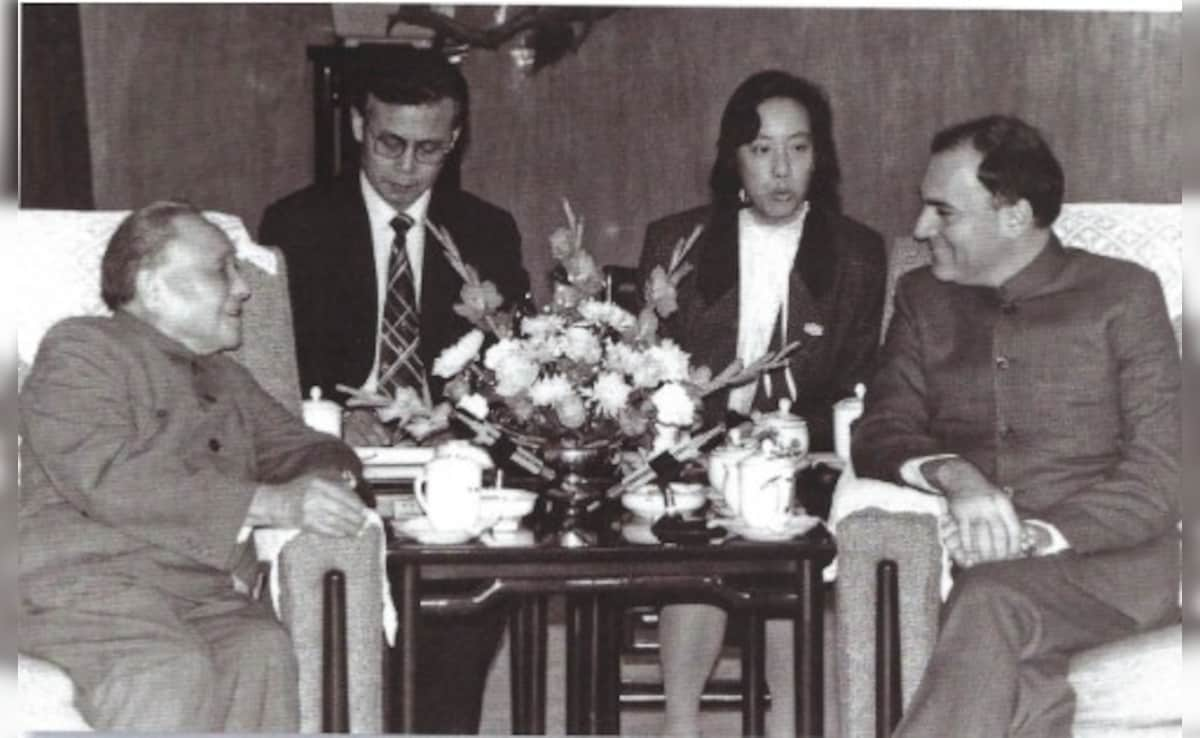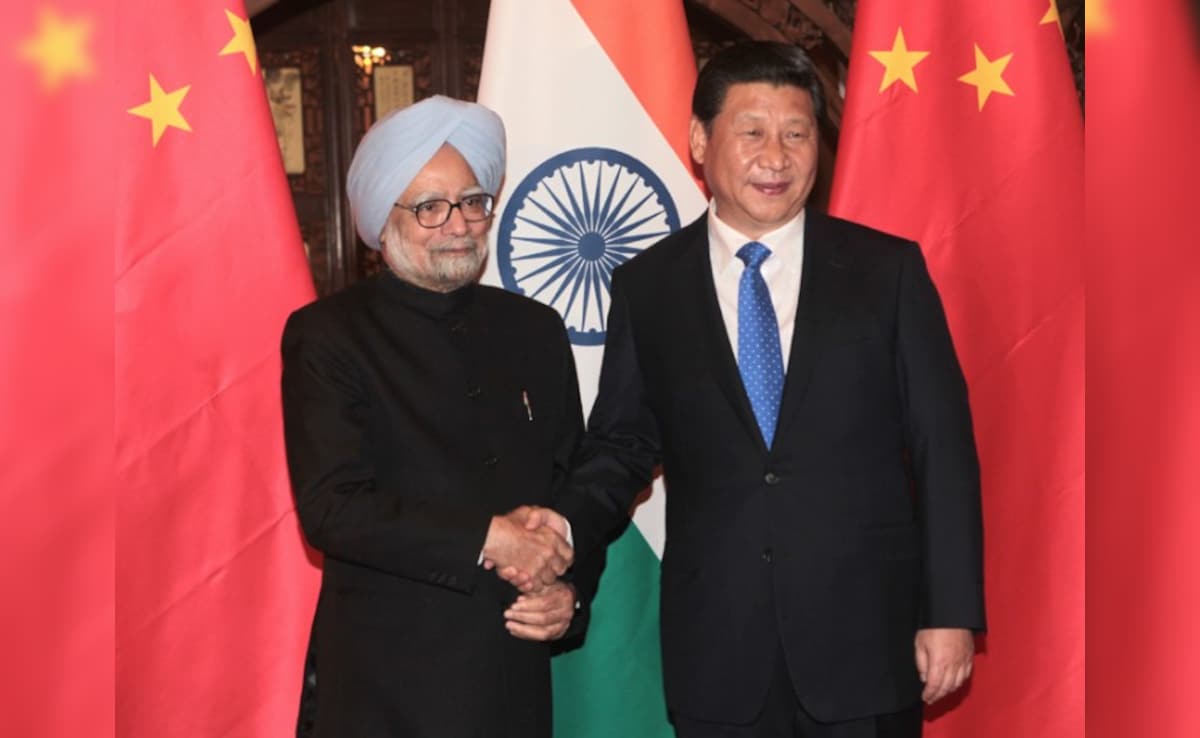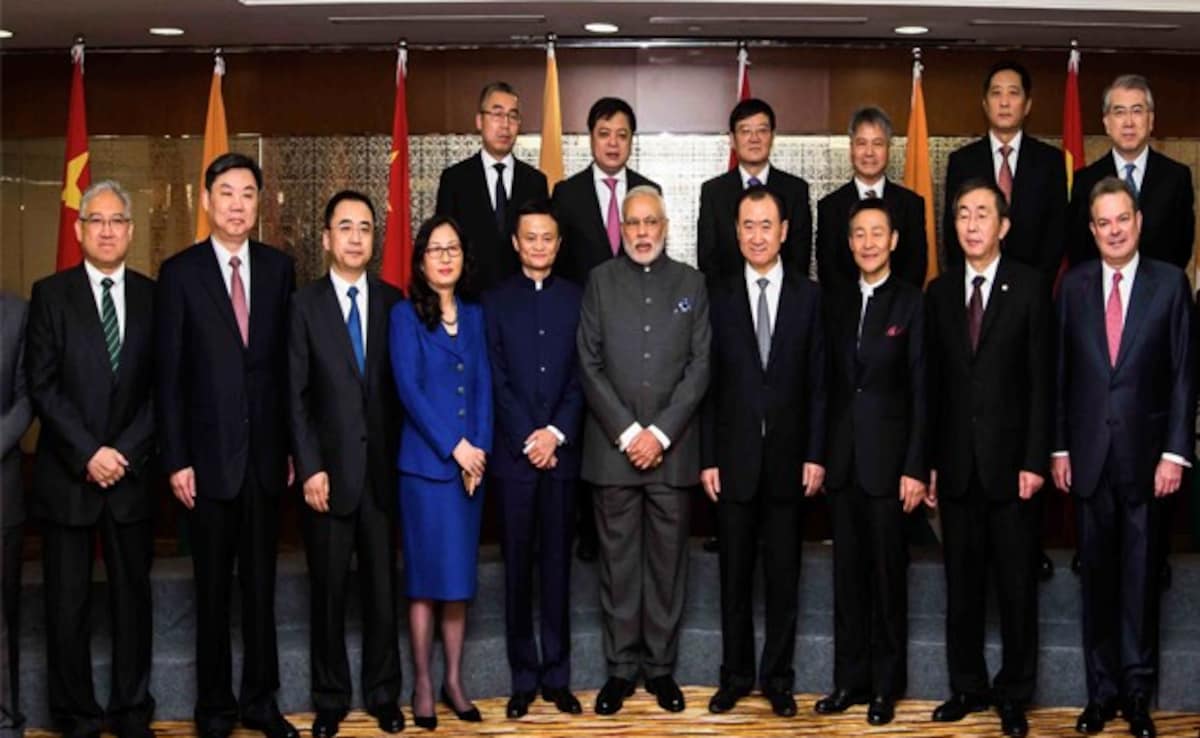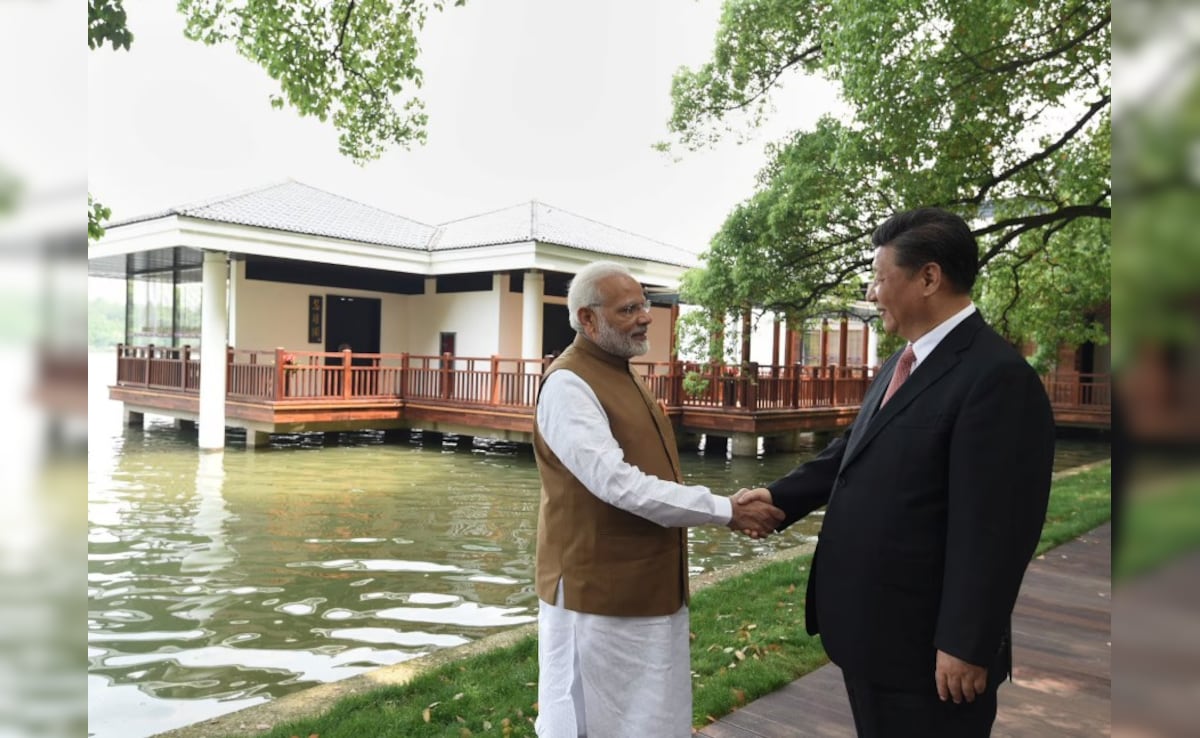
- Prime Minister Modi will visit China from August 31 to September 1, 2025, for the SCO Summit in Tianjin
- This is Modi's first visit to China since the 2020 Galwan clashes that strained bilateral relations
- Past visits led to agreements on border peace, trade, regional cooperation, including Panchsheel principles
Prime Minister Narendra Modi is set to visit China from August 31 to September 1, to attend the Shanghai Cooperation Organisation (SCO) Summit in Tianjin. This will be his first visit to China since the 2020 Galwan clashes, which led to a major setback in India-China relations.
This visit continues past efforts by Prime Ministers to improve ties with China, from Jawaharlal Nehru's 1954 visit that introduced the Panchsheel principles, to Atal Bihari Vajpayee's 2003 visit that saw several agreements signed. Visits by Dr Manmohan Singh and Narendra Modi focused on dialogue, trade, and border stability. The 2025 visit is part of the ongoing efforts to address differences.
What Makes This Visit Significant
PM Modi will visit China's Tianjin at the invitation of Chinese President Xi Jinping. He is expected to hold bilateral meetings with several leaders on the sidelines of the Summit, as per the Ministry of External Affairs.
The visit takes place amid US tariffs imposed by President Donald Trump. It also follows China's continued support for Pakistan after the Pahalgam terror attack.
In June, Defence Minister Rajnath Singh had refused to sign a joint SCO defence statement due to the exclusion of the April 22 Pahalgam attack. In July, China issued a strong condemnation of the Pahalgam attack after the US designated The Resistance Front, linked to Pakistan-based Lashkar-e-Taiba, as a foreign terrorist organisation. China called for regional counterterrorism cooperation.
At the 2025 SCO Summit, the 10-member countries are expected to discuss terrorism, regional security, and trade. The visit also aims to stabilise and resume dialogue in India-China relations.
A Look Back
As we look ahead to PM Modi's 2025 visit to China, here's a look at how India-China relations have grown over the years.
When India gained independence from British rule in 1947, the country stepped into a new chapter under the leadership of its first Prime Minister, Jawaharlal Nehru. He placed emphasis on building friendly relations with China. Nehru also promoted the slogan "Hindi Chini Bhai Bhai."
The First Visit: Jawaharlal Nehru's 1954 Visit
In October 1954, Jawaharlal Nehru became the first Indian Prime Minister to visit China. Earlier that year, on April 29, 1954, India and China had signed the Agreement on Trade and Intercourse between the Tibet Region of China and India. The preamble of this agreement outlined the Five Principles of Peaceful Coexistence, or Panchsheel:
1. Mutual respect for each other's territorial integrity and sovereignty
2. Mutual non-aggression
3. Mutual non-interference in internal affairs
4. Equality and mutual benefit
5. Peaceful coexistence
PM Nehru's visit helped reinforce these principles, and it was seen as a significant step toward building friendly relations. On June 28, 1954, during Premier Zhou Enlai's visit to India, both leaders issued a Joint Statement expanding Panchsheel as a guiding framework not only for bilateral ties but also for international relations.
Despite this, relations deteriorated due to unresolved border disputes, particularly over Aksai Chin in Ladakh and Arunachal Pradesh (then known as the North-East Frontier Agency or NEFA). Tensions rose when China constructed a road through Aksai Chin. Diplomatic efforts failed, and on October 20, 1962, China launched military offensives in Ladakh and NEFA. The Sino-Indian War lasted about a month. On November 21, 1962, China declared a unilateral ceasefire, withdrawing from some areas.

The Turning Point: Rajiv Gandhi's 1988 Visit
After the 1962 Sino-Indian War, diplomatic relations between the two countries were strained. However, full diplomatic ties were restored in 1976 with the exchange of ambassadors.
PM Rajiv Gandhi's 1988 visit marked a beginning in the improvement of bilateral relations. He paid an official visit to China from December 19-23, 1988. The visit, the first by an Indian PM in 34 years, marked a significant step.
High-Level Talks
Rajiv Gandhi held talks with Chinese Premier Li Peng and met with Chinese President Yang Shangkun. The discussions included a range of bilateral and international issues of mutual concern.
Reaffirming Panchsheel
The leaders reaffirmed the Panchsheel as the foundation of their bilateral relations. They agreed that strengthening ties based on these principles is in the core interest of both nations.
Focus On Boundary Issue
One of the key areas of discussion was the Sino-Indian boundary issue. Both countries agreed to resolve the dispute through peaceful consultations, while working to improve broader bilateral relations. To support this, they announced the formation of a Joint Working Group on the boundary issue.
Steps To Deepen Cooperation
India and China agreed to establish a Joint Group on economy, trade, and science and technology. Several agreements were also signed during the visit, including:
An agreement on science and technology cooperation
A deal on civil aviation transport
A plan to implement bilateral cultural exchanges (1988-1990)
Position On Tibet
China raised concerns about the activities of some Chinese Tibetans residing in India. Rajiv Gandhi reaffirmed India's position that Tibet is an autonomous region of China.

A Breakthrough: PV Narasimha Rao's 1993 Visit
In September 1993, PM PV Narasimha Rao visited Beijing and held talks with President Jiang Zemin and Premier Li Peng. The most important outcome of the visit was the signing of the Agreement on the Maintenance of Peace and Tranquility along the Line of Actual Control (LAC) on September 7, 1993.
Key points of 1993 Agreement
1. Solving Border Issue Peacefully
- Both sides agreed that the boundary dispute would be resolved through peaceful talks.
- They promised not to use or threaten to use force against each other.
2. Reducing Troops On Border
- Both sides would keep only a minimum number of soldiers near LAC.
- They would reduce forces in phases, by mutual agreement, depending on region and situation.
3. Avoiding Military Exercises Near LAC
- Large-scale military exercises near LAC would not be allowed in certain areas.
- If either side planned such exercises, they would inform the other in advance.
4. Avoiding Airspace Violations
- Both sides would take care to avoid air intrusions across LAC.
- They would also consult each other if any such intrusions happened and discuss restrictions on air exercises in the area.
At the time, PM Rao's Look East Policy, which he introduced in 1992, showed a shift in India's foreign strategy, focusing on peaceful cooperation, economic growth, and building strong ties with both China and Southeast Asia.
India-China Ties Reset: Atal Bihari Vajpayee's 2003 Visit
PM Atal Bihari Vajpayee's visit to China on June 22-27, 2003, followed tensions triggered by India's 1998 Pokhran nuclear tests, where China was seen as a key security concern, and Beijing's diplomatic support to Pakistan during the 1999 Kargil War. His visit marked a move toward rebuilding trust.
Nathula Pass Reopened
A major highlight of the visit was the signing of a Memorandum on Expanding Border Trade, under which both countries agreed to open Nathula Pass in Sikkim for trade. India designated Changgu and China designated Renqinggang (Tibet) as official trading points.
Indian Mangoes Cleared For Export
A Protocol on Phytosanitary Requirements was signed to allow the export of Indian mangoes to China.
Simplified Visa Procedures
A new MoU on Simplifying Visa Procedures was introduced, making it easier for businesspeople, tourists, students, and professionals to obtain visas.
Boost to Science, Technology, and Renewable Energy
Multiple MoUs were signed to deepen cooperation in:
- Renewable energy, including small hydropower and wind energy
- Ocean science and technology, covering polar research, coastal management, and marine resources
- Natural sciences, including physics, chemistry, biology, and mathematics
Legal and Judicial Exchange Agreement Signed
India and China signed an MoU on Cooperation in the Judicial Field, aiming to:
- Exchange legal knowledge and best practices
- Train public prosecutors and legal personnel
- Conduct joint seminars and form expert working groups
Shared Vision For 21st Century: Dr Manmohan Singh's 2008 Visit
During Prime Minister Dr Manmohan Singh's official visit to China on January 13-15, 2008, both countries issued "A Shared Vision for the 21st Century" which called for enhancing bilateral cooperation.
Principles of Panchsheel
The leaders reaffirmed the relevance of Panchsheel as guiding principles in international relations.
Support for UN Reform
Both sides supported reform of the United Nations, with India reiterating its aspiration for permanent membership of the UN Security Council. China recognised India's status as a major developing country and expressed support for India's greater role at the UN.
Regional Cooperation
The two sides agreed to strengthen regional cooperation through mechanisms such as the East Asia Summit, SAARC, BIMSTEC, and the Shanghai Cooperation Organization (SCO). They expressed willingness to explore a Regional Trading Arrangement (RTA) between India and China.
2013 Visit
At the invitation of Chinese Premier Li Keqiang, Dr Singh paid an official visit to China from 22-24 October 2013. He also met with President Xi Jinping and Chairman Zhang Dejiang. The two sides reaffirmed their resolve to advance their Strategic and Cooperative Partnership in line with Panchsheel.
BCIM Economic Corridor
Progress on the Bangladesh-China-India-Myanmar (BCIM) Economic Corridor was welcomed.
Border Defence Cooperation
The two sides signed the Border Defence Cooperation Agreement to enhance stability along the border. Building on agreements from 1993, 1996, and 2005, both sides reaffirmed their commitment to maintaining peace and tranquility.
Trans-border River Cooperation
India acknowledged China's support on hydrological data sharing. A new MoU on Trans-border River Cooperation was signed to boost emergency management and data exchange during flood season.
People-to-People Exchange
A Program of Cultural Exchange (2013-2015) was signed, covering areas such as art, education, sports, media, and heritage.

PM Narendra Modi's Record Visits To China
With five visits to China as Prime Minister, four visits as Gujarat Chief Minister, and 18 meetings with President Xi Jinping, PM Modi has visited China more than any other Indian Prime Minister.
2015: First Official Visit As PM
In May 2015, PM Modi visited China for the first time as Prime Minister. India and China signed 24 agreements, valued at over $22 billion, covering several sectors. Both countries also agreed to set up a military hotline between their army headquarters to avoid border misunderstandings.

2016: Visit During G20 Summit
In his meeting with Xi Jinping in 2016, PM Modi had raised India's concerns about the China-Pakistan Economic Corridor (CPEC), which runs through Pakistan-occupied Kashmir (PoK).
2017: Visit Following Doklam Standoff
In 2017, tensions rose with the Doklam standoff, when Indian and Chinese troops faced off over road construction in a disputed area near the Bhutan-China-India tri-junction. The standoff lasted 73 days and was resolved diplomatically. Later that year, at the BRICS Summit in Xiamen, PM Modi met Xi Jinping. The two leaders agreed to improve ties. For the first time, China did not block India's proposal to name Pakistan-based groups like JeM, LeT, and the Haqqani Network as terrorist organisations in the joint BRICS declaration.
2018: Visit During Wuhan Summit
During the visit, both sides issued strategic guidance to their respective militaries to strengthen communication in order to build trust and mutual understanding.

Six weeks later, PM Modi and Xi met again during the Shanghai Cooperation Organisation (SCO) Summit in Qingdao in June. Two MoUs were signed: Sharing hydrological information of Brahmaputra river by China to India and Amendment of Protocol on phytosanitary requirements for exporting rice from India to China to include non-Basmati rice
The Road Forward
The upcoming 2025 visit of PM Modi is the latest chapter in a complex history of India-China relations. As seen in past PM visits, India-China ties have been in a cycle of attempted cooperation and subsequent setbacks. Each prime ministerial visit has aimed to build trust, and address disputes. The upcoming visit will focus on whether the two nations can once again overcome challenges: the effects of the Galwan clashes, ongoing border disputes, and recent geopolitical tensions.
Track Latest News Live on NDTV.com and get news updates from India and around the world

